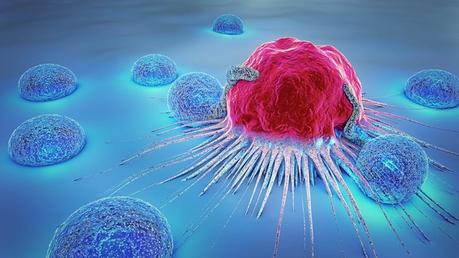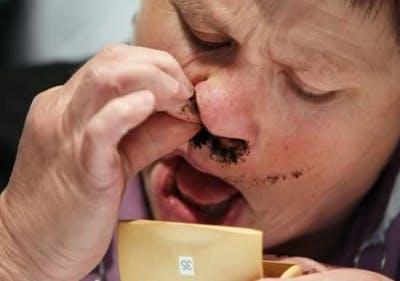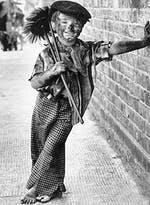
There are many people who say that we don't know what causes cancer. This is incorrect. While we may not know how cancer develops, we already know quite a bit about things that cause cancer. In fact, the first cause of cancer caused by an external agent was described in 1761 by Dr. John Hill of London, a physician, botanist and medical writer.
Tobacco was first used by the native Americans, and mention of its use came from explorers of the New World. By 1614, it was widely in use in Europe with an estimated 7000 shops in London. Smoking tobacco was replaced in polite society by snuffing, a type of smokeless tobacco. A pinch of ground up tobacco is inhaled or 'snuffed' usually after putting it on the back of the hand between the thumb and first finger. This area is sometimes called the 'anatomic snuff box' for that reason.
In 1761, Dr. Hill described two case histories of 'polypusses' of the nose, which he believed were cancer. This was the first known description of a chemical (tobacco snuffing) causing cancer. There is some controversy as to whether there is truly a link, but given the rarity of its use, having gone out of style along with the monocle and topcoat, is no longer of much significance. Also given how snuffing tobacco gives you a highly unattractive 'Adolf Hitler' look, it is no surprise about its fall from popularity.

The most definitive proof of cancer causing chemicals was provided by Sir Percivall Pott (1714-1788). Considered one of the greatest surgeons of his era, along with John Hunter, Percivall Pott was born in London in 1714 and worked diligently towards becoming a clergyman. Eventually changing his mind, he apprenticed at St. Bartholomew's Hospital and gained his full licence in 1736 being granted the Grand Diploma by the Court of Examiners of the Barbers Surgeon Company.
In 1756, Pott was thrown from his horse, sustaining a compound fracture. During his forced convalescence, he began writing about various topics in medicine that still bear his name. An astute observer of disease, he is remembered for 'Pott's fracture' and also named for tuberculous disease known as Pott's disease.
However, his link to cancer came with his 1775 description of cancer of the scrotum which was a particular bane of the chimney sweeps in London. After the Great Fire of London of 1666, new fire codes were enacted which required smaller, more tortuous chimney configurations. This made it more difficult to use mechanical methods like a long brush. In addition, the increased turns made it easier to accumulate soot and creosote that needed cleaning.

Chimney sweep apprentices started at age 3½ years, but most were older than 6, only because they were otherwise considered too weak, unable to work long hours, or too easily would 'go off' (they would die). The apprentice agreement required a weekly bath, but most followed the common tradition of three baths per year.
There were a million horrible painful ways for children chimney sweeps to die. They would often get stuck inside chimneys, fall from great heights, suffocated when soot fell on them, or burned to death. If they survived to puberty, one more horror awaited them - chimney sweeper's cancer. Children as young as 8 years old were coming in with cancer of the scrotum. It started with what they called a soot-wart. If caught early enough, chimney sweeps would cut the soot-wart off with a razor. But if not, it would soon invade the skin, through the scrotum, into the testicles and then into the abdomen. It was painfully destructive and often fatal. It was rare outside of England. An Act of Parliament passed in 1840 to improve the plight of the chimney sweep, but lax enforcement led to continued abuse and no decrease in cases of scrotal cancer.
It was quite clear that this was a uniquely occupational hazard as scrotal cancer was exceedingly rare in any other circumstance, and also quite rare outside of England, where better protective clothing was available. Dr Pott determined that it was the soot that was the causative agent of cancer. The soot was lodging in the folds of the scrotal skin and over time, put the sweeps at risk of cancer. Once the use of small boys as chimney sweeps declined, the disease faded away once again into obscurity.
Tar, which formed up to a third of the chemical of soot, was the chief suspect. In 1915, Japanese scientists were able to induce cancer by applying coal tar to skins of experimental animals every 2-3 days for three months. Throughout the 1920s, researchers worked on isolating the compounds with the soot that was carcinogenic since soot contains many different potential cancer causing chemicals. Benzpyrene was eventually isolated as one of the most carcinogenic. While soot would be one of the first chemicals described to cause cancer (carcinogen), it would only be the first of many.
Also published on idmprogram.com.




